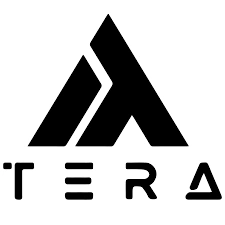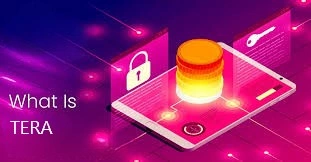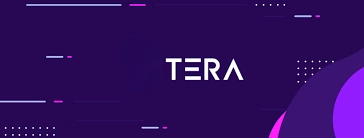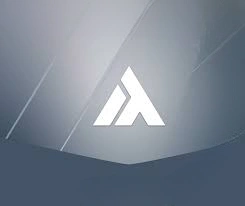TERA Crypto: Decentralized Blockchain for DApps and Mining
Table of Contents

TERA is a Mineable Token. Are you curious about expanding your crypto portfolio with other mineable tokens or alternative coins? At Niftyfinances, you’ll find in-depth information, guides, and the latest updates on various promising crypto projects. Whether you’re a miner or an enthusiast looking for unique opportunities, Niftyfinances is your go-to platform to discover what’s next in decentralized finance!
TERA is a decentralized blockchain platform designed to provide high-performance solutions for developers and users alike. Unlike many existing blockchain networks, offers an innovative approach to scalability, security, and accessibility, making it an attractive choice for decentralized application (DApp) development.
TERA’s feature is its support for DApp development using JavaScript, one of the most widely used programming languages in the world. This enables developers to create and deploy decentralized applications seamlessly without the need to learn specialized blockchain-specific programming languages. Leveraging JavaScript, lowers the barrier to entry, making blockchain development more accessible to a broader audience.
Also introduces unique features that set it apart from other blockchain platforms. One of its most notable aspects is its free transaction model, which eliminates the need for users to pay transaction fees, thereby promoting mass adoption and usability. Additionally, employs a CPU-friendly mining algorithm, which ensures that mining remains energy-efficient and inclusive, allowing a larger number of participants to engage in securing the network without requiring expensive hardware.
With its focus on decentralization, efficiency, and accessibility, TERA is positioning itself as a revolutionary blockchain platform for developers and users looking to explore the potential of decentralized applications.

Understanding TERA Cryptocurrency
TERA is a next-generation blockchain platform designed to offer a fast, scalable, and fully decentralized ecosystem for users and developers. Combining a unique consensus mechanism, JavaScript-based smart contracts, and zero-fee transactions, aims to revolutionize how blockchain technology is used for decentralized applications (DApps) and financial transactions.
Purpose and Mission
Was created with the vision of providing a high-performance, decentralized blockchain that overcomes the limitations of traditional cryptocurrencies like Bitcoin and Ethereum. The platform focuses on:
- Empowering Developers – Enabling JavaScript-based DApp development, makes blockchain accessible to a larger developer community.
- Scalability Without Fees – Unlike Ethereum, which relies on costly gas fees, enables free transactions while maintaining network security.
- Decentralization and Fair Mining – The consensus mechanism is designed to prevent centralization by allowing CPU-friendly mining instead of ASIC or GPU dominance.
TERA Distinguishing from Other Cryptocurrencies
✅ Free Transactions – Unlike Ethereum and Bitcoin, does not require gas fees, making it ideal for micropayments and high-frequency transactions.
✅ JavaScript-Based Smart Contracts – Developers can create DApps using JavaScript, one of the most widely used programming languages.
✅ CPU-Friendly Mining – Mining is accessible to a wider range of users, preventing mining centralization.
✅ High-Speed Transactions – boasts a high transactions-per-second (TPS) capacity, making it scalable for mass adoption.
✅ Decentralized Governance – No single entity controls the network, ensuring trustless and censorship-resistant operations.

Technical Architecture of TERA
Built on a high-performance blockchain protocol designed for scalability, decentralization, and energy-efficient mining. Its architecture ensures fast transactions, free transfers, and easy integration of smart contracts and DApps, making it a strong alternative to traditional blockchain platforms.
TERA’s Blockchain Protocol and Consensus Mechanism
Operates on a unique Proof-of-Work (PoW) consensus mechanism that is specifically designed to be:
- CPU-Friendly – Unlike Bitcoin’s SHA-256 or Ethereum’s Ethash, the PoW algorithm ensures that mining can be done efficiently on standard CPUs, preventing GPU/ASIC dominance.
- Decentralized & Secure – By allowing wider participation in mining, reduces the risk of centralization and enhances network security.
- Lightweight & Energy-Efficient – Unlike traditional PoW-based blockchains, optimizes computational efficiency, making mining more accessible without excessive energy consumption.
Consensus algorithm also supports dynamic difficulty adjustment, ensuring a stable block production time while maintaining security against attacks.
Transaction Speeds and Network Efficiency
A blockchain is designed for high-speed transactions and seamless scalability.
✅ Fast Block Times – Blocks are created every 10 seconds, ensuring rapid transaction confirmation.
✅ High Transactions Per Second (TPS) – supports up to 1000+ TPS, making it significantly faster than Bitcoin (~7 TPS) and Ethereum (~30 TPS).
✅ No Gas Fees – Unlike Ethereum, where gas fees can fluctuate unpredictably, enables free transactions, making it ideal for microtransactions and large-scale DApp adoption.
✅ Efficient Data Storage – uses an optimized ledger structure to minimize blockchain bloat and reduce storage requirements for full nodes.
Integration of Smart Contracts and DApps
One of the few blockchain platforms that natively supports JavaScript for smart contracts and decentralized applications (DApps).
Smart Contract Features:
- JavaScript-Based Contracts – Developers can write smart contracts in JavaScript, making blockchain development more accessible.
- On-Chain Execution – processes smart contracts directly within the blockchain, ensuring transparency and security.
- Low Resource Consumption – Smart contract execution is optimized for high efficiency, preventing network congestion.
DApp Development on TERA:
- Easy Deployment – JavaScript support allows developers to build and deploy DApps without needing specialized blockchain programming languages like Solidity.
- Decentralized Hosting – DApps run fully on the blockchain without reliance on external servers.
- Scalable Infrastructure – High TPS and free transactions make it ideal for financial applications, gaming platforms, and decentralized marketplaces.

Mining TERA: A Comprehensive Guide
TERA uses a unique Proof-of-Work (PoW) consensus algorithm designed to be efficient, decentralized, and CPU-friendly. Unlike traditional PoW blockchains that require expensive ASIC or GPU hardware, allows users to mine efficiently using standard CPUs, making it more accessible to a wider audience.
TERA’s Proof-of-Work (PoW) Consensus Algorithm
✅ CPU-Friendly Mining – No need for costly GPUs or ASIC miners, ensuring fair distribution.
✅ Energy Efficiency – Lower power consumption compared to Bitcoin and Ethereum mining.
✅ Decentralization – Encourages more participants, reducing centralization risks in mining pools.
✅ Adaptive Difficulty Adjustment – Ensures stable block generation even as mining power fluctuates.
Hardware Requirements Mining
Mining TERA does not require high-end equipment, but a well-optimized CPU setup will yield better results.
🔹 Minimum Hardware Requirements:
- Processor (CPU): Multi-core processor (Intel i5/i7 or AMD Ryzen recommended).
- RAM: 4GB minimum (8GB+ recommended for optimal performance).
- Storage: SSD is preferred for faster blockchain synchronization.
- Internet Connection: Stable connection for uninterrupted mining.
Unlike Ethereum or Bitcoin mining, TERA mining does not benefit from powerful GPUs. The network is designed to ensure fairness by prioritizing CPU performance.
Step-by-Step Guide to Setting Up Mining
1. Download and Install the TERA Node Software
- Visit the official TERA website and download the latest version of the mining software.
- Install the software on your system and ensure you have the latest updates.
2. Synchronize with the TERA Blockchain
- Open the TERA software and allow it to synchronize with the blockchain.
- This process may take some time depending on your internet speed.
3. Configure Your Mining Setup
- Access the mining settings in the software.
- Adjust CPU usage to optimize mining performance without overloading your system.
- Connect to a mining pool if preferred (optional).
4. Start Mining
- Click on the “Start Mining” button.
- The software will begin solving cryptographic puzzles to validate transactions and secure the network.
5. Monitor Your Mining Performance
- Keep an eye on hash rate, block rewards, and system performance using the TERA dashboard.
- Adjust CPU settings if needed to balance mining efficiency with system performance.
Sharding Technology in TERA
Implements sharding technology to enhance scalability, efficiency, and decentralization. Unlike traditional blockchains that process all transactions sequentially, sharding allows the network to handle multiple transactions in parallel, significantly increasing the overall throughput.
TERA’s Sharding Protocol
Sharding in TERA works by dividing the blockchain into smaller, independent partitions called shards. Each shard processes its transactions and smart contracts, reducing congestion on the main chain.
🔹 How It Works:
- The network is divided into multiple shards, each responsible for validating its transactions.
- Nodes are assigned to specific shards, processing only a portion of the total blockchain data.
- A coordinating mechanism ensures that all shards stay synchronized and maintain network security.
By implementing sharding, achieves higher transaction throughput without compromising decentralization or security.
How Sharding Enhances Scalability and Network Performance
Sharding offers several key benefits that improve the overall efficiency of TERA’s blockchain:
✅ Higher Transactions Per Second (TPS) – Since each shard processes its own set of transactions, the network can scale linearly with more shards, reaching thousands of TPS.
✅ Reduced Blockchain Bloat – Nodes only store data relevant to their assigned shard, reducing storage requirements and improving efficiency.
✅ Lower Transaction Latency – Faster block processing means transactions are confirmed more quickly, improving the user experience.
✅ Optimized Resource Usage – By distributing processing power across multiple shards, prevents network congestion and excessive CPU utilization.
Implications of Sharding for Developers and End-Users
For Developers:
- Parallel Processing of Smart Contracts – DApps can run on specific shards, optimizing performance and reducing bottlenecks.
- More Scalable Applications – Developers can create high-performance decentralized applications without worrying about network congestion.
- Inter-Shard Communication – Smart contracts can interact across shards, allowing seamless data exchange between different blockchain segments.
For End-Users:
- Faster Transactions – Users experience near-instant transaction confirmation.
- Lower Fees – Efficient resource usage leads to cost reductions, benefiting users who transact frequently.
- Improved Network Stability – Even with high traffic volumes, sharding ensures that the blockchain remains responsive and decentralized.
Security Features of TERA
prioritizes security, decentralization, and resilience to ensure a trustless and attack-resistant blockchain environment. Leveraging a unique consensus mechanism, decentralized architecture, and proactive security measures, safeguards both developers and users against threats.
Mechanisms Ensuring Decentralization and Protection Against Attacks
employs multiple layers of security to prevent attacks and ensure network integrity:
🔹 1. CPU-Friendly Proof-of-Work (PoW) Consensus
- Unlike ASIC-dominated networks like Bitcoin, TERA’s PoW algorithm is optimized for CPU mining, ensuring a fair and decentralized mining process.
- This prevents centralized mining pools from gaining control over the network.
🔹 2. Resistance to 51% Attacks
- Since mining is accessible to a wide range of participants, no single entity can easily gain majority control of the network.
- Dynamic difficulty adjustments prevent rapid hashrate takeovers.
🔹 3. Sharding for Enhanced Security
- Dividing the blockchain into shards, isolates transactions, making it harder for attackers to disrupt the entire network.
- Even if an attacker compromises one shard, the main blockchain remains secure.
🔹 4. Double-Spending Protection
- Transactions are validated by multiple nodes before confirmation, making double-spending virtually impossible.
- The consensus mechanism ensures that only verified transactions are recorded.
🔹 5. Encryption and Data Integrity
- Transactions and smart contracts are secured with cryptographic encryption, ensuring data privacy and immutability.
- Digital signatures authenticate legitimate transactions, preventing forgery or unauthorized changes.
Bug Bounty Program and Its Significance
To proactively identify and fix vulnerabilities, operates a bug bounty program, incentivizing security researchers and developers to find and report issues.
✅ Encourages Ethical Hacking – White-hat hackers can earn rewards for discovering security flaws before they are exploited.
✅ Continuous Improvement – Regular security audits ensure ongoing updates to the blockchain’s defense mechanisms.
✅ Community-Driven Security – Open-source contributions help strengthen TERA’s codebase, making it more resilient to attacks.
Engaging external security experts, ensures robust defenses against potential exploits, creating a safer blockchain for users, developers, and businesses.
Best Practices for Users to Maintain Security
While TERA provides a secure foundation, users should follow best security practices to further protect their assets:
Use Secure Wallets – Always use official wallets and enable strong passwords & 2FA.
Beware of Phishing Attacks – Never share private keys or wallet credentials with anyone.
Keep Software Updated – Ensure you’re using the latest version of the TERA node software or wallet to protect against known vulnerabilities.
Verify Smart Contracts – Before interacting with DApps, confirm they are from trusted sources and review their code if possible.
Avoid Public Wi-Fi for Transactions – Only conduct blockchain transactions on secure and private networks.
How to Buy and Store TERA
TERA is a decentralized cryptocurrency designed for fast transactions, secure storage, and easy accessibility. Whether you’re purchasing for investment, mining rewards, or developing DApps, it’s important to know where to buy it and how to store it safely.
Where to Buy TERA: Recommended Exchanges
Can be purchased on select cryptocurrency exchanges that support the token. Before choosing an exchange, ensure it has good liquidity, security measures, and reasonable trading fees.
- Exchange A – Known for its user-friendly interface and strong security.
- Exchange B – Offers low trading fees and high liquidity.
- Exchange C – Supports multiple trading pairs, including TERA.
Always verify the exchange’s reputation and check user reviews before proceeding.
Step-by-Step Guide to Purchasing TERA
- Create an Account – Sign up on a cryptocurrency exchange that lists. Complete the identity verification process if required.
- Deposit Funds – Add funds to your exchange account using fiat currency or another cryptocurrency.
- Search for TERA – Navigate to the trading section and look for the trading pair (e.g., TERA/USDT/BTC).
- Place an Order – Choose between a market or limit order to buy TERA at your preferred price.
- Confirm and Secure – Once the transaction is complete, withdraw your to a secure wallet instead of keeping it on the exchange.
Security Tips for Choosing an Exchange
- Use exchanges with a strong security track record and two-factor authentication (2FA).
- Avoid keeping funds in exchange wallets for long-term storage.
- Research trading fees, withdrawal limits, and customer support responsiveness.
Storing TERA Securely
Once you’ve purchased, you need a secure wallet for storage. There are two main types:
- Hot Wallets (Online Storage) – Convenient for frequent transactions but more vulnerable to hacks. Examples include mobile, desktop, and web wallets.
- Cold Wallets (Offline Storage) – More secure as they remain disconnected from the internet. Hardware wallets and paper wallets fall into this category.
How to Set Up a TERA-Compatible Wallet
- Choose a Wallet – Select a supported wallet based on your needs (official TERA wallet, third-party software, or hardware wallet).
- Download & Install – If using a software wallet, download it from a trusted source and install it on your device.
- Generate a Wallet Address – This unique address allows you to receive tokens.
- Back-Up Your Private Key – Securely store your private key or seed phrase in a safe place. Avoid storing it digitally.
- Transfer Your TERA – Withdraw from the exchange to your wallet.
Best Security Practices for Storing TERA
- Enable 2FA where applicable.
- Use a hardware wallet for long-term storage.
- Never share your private key or seed phrase.
- Keep software wallets updated to protect against vulnerabilities.
- Store backups of your seed phrase in multiple secure locations.
By following these steps, you can safely buy, store, and manage your TERA tokens with confidence.
TERA stands out in the blockchain space with its unique combination of high-speed transactions, decentralized architecture, and energy-efficient mining. Its innovative consensus mechanism ensures security while maintaining scalability, making it an excellent choice for developers and miners alike.
If you’re looking to build decentralized applications (DApps) or participate in blockchain mining, TERA offers a robust and accessible platform. Its lightweight design and low transaction costs provide an ideal environment for innovation and growth.
Now is the time to engage with the TERA community, explore its features, and start building on a blockchain designed for the future. Join the movement and be part of the next wave of decentralized technology!